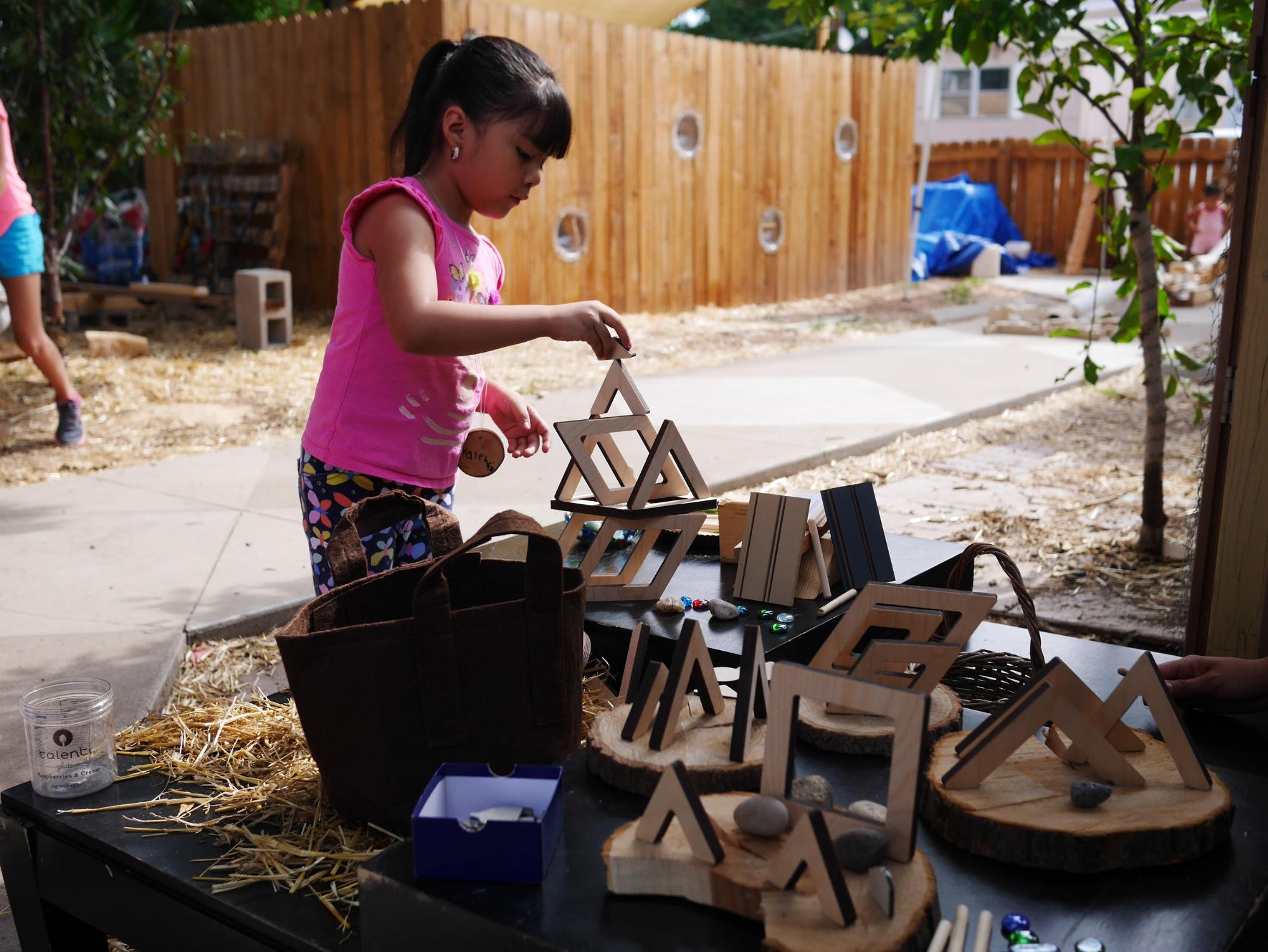This blog is part 1 in a series by Nancy Brown, retired early childhood educator and friend of Kodo
Young children joyfully learn through play. We see it in action every day in our programs. So what is the role of the teacher today? How often do teachers step in, or engage in direct instruction? The answer to this question may bring up some big feelings for teachers - questions about the changing role of teachers of young children, about assessment-driven instruction, about mandated curriculum, and about the very nature of our work.
Four-year-old Monica digs in the sandbox. She calls out to her nearby friends, “Get shovels, hurry! It’s water. I found water!” Several children pick up a hand trowel and a garden shovel and join her in making holes. They work side-by-side, intent on making a discovery too. Holes appear all over the sandbox, some very deep. One child stops when his shovel hits hard packed soil, another finds pebbles the teacher had painted with gold paint and buried months back, one child pulls up a length of filter cloth and another, digging close to the girl who’d discovered the water, claps with delight as her hole floods with water, too.
What a fabulous moment. Active, open-ended play that became focused, that engaged several children, and which opened up an opportunity for wondering together, using their imaginations, and making discoveries. What did the teacher see? What did the teachers do in that moment? In the next few hours? What will they talk about at the end of the day or plan for the next days, weeks, and months in response? Is a little water in the sandbox worthy of all that attention?
Yes, it is.
Play scenes like these occur throughout the day in inquiry-based programs. Good teachers take note and talk together about what kind of questions were provoked among the players. In a learning community that embraces a constructivist approach, these moments are gems. The result of this play might engage families, children, and teachers for months in research and exploration of related experiences. This is the curriculum in a play-based environment. The role of the teacher is to support learning, develop relationships, and become co-learners with the players. When it works, everyone is ignited with the joy of learning. But sometimes it doesn’t. Why is that?
I wonder if there less agreement today about what young children need? Have we gotten so focused on the acquisition of skills and abilities that we’ve forgotten about creativity, thinking skills, and relationships? What about joy? Joy for the teachers, children, and their families? What do you think?
 This blog was written by Nancy Brown, Early Childhood Educator
Nancy brown is a retired Early Childhood educator and co-creator of Highrise Building Sets. After having taught ECE at Cabrillo College in Aptos, CA, she directed programs and taught first grade and preschool since 1972. She recently developed a site for teacher reflection and individualized professional development for the California Department of Education, Early Education Division and makes toys and writes books for her six grandchildren.
This blog was written by Nancy Brown, Early Childhood Educator
Nancy brown is a retired Early Childhood educator and co-creator of Highrise Building Sets. After having taught ECE at Cabrillo College in Aptos, CA, she directed programs and taught first grade and preschool since 1972. She recently developed a site for teacher reflection and individualized professional development for the California Department of Education, Early Education Division and makes toys and writes books for her six grandchildren.
 This blog was written by Nancy Brown, Early Childhood Educator
Nancy brown is a retired Early Childhood educator and co-creator of Highrise Building Sets. After having taught ECE at Cabrillo College in Aptos, CA, she directed programs and taught first grade and preschool since 1972. She recently developed a site for teacher reflection and individualized professional development for the California Department of Education, Early Education Division and makes toys and writes books for her six grandchildren.
This blog was written by Nancy Brown, Early Childhood Educator
Nancy brown is a retired Early Childhood educator and co-creator of Highrise Building Sets. After having taught ECE at Cabrillo College in Aptos, CA, she directed programs and taught first grade and preschool since 1972. She recently developed a site for teacher reflection and individualized professional development for the California Department of Education, Early Education Division and makes toys and writes books for her six grandchildren.

Share:
17 Preschool Books for 2017
Kodo's TV Debut on Treehouse Masters